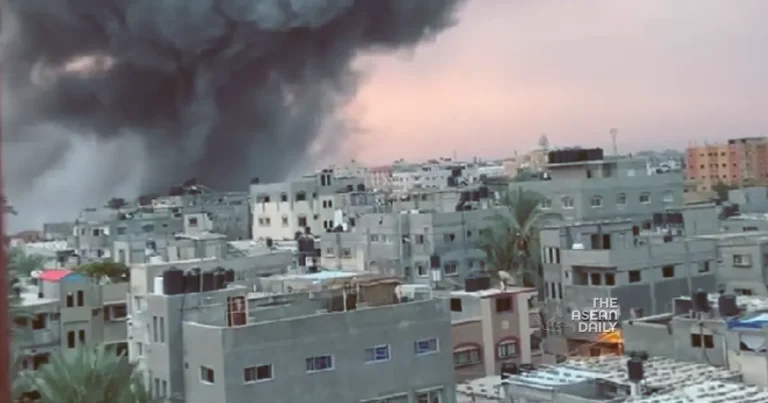2-12-2023 (GAZA) Renewed hostilities engulfed Gaza for a second consecutive day on Saturday (Dec 2) as attempts to extend a week-long truce with Hamas failed, leading to intensified Israeli bombardments. Talks broke down over the extension of the truce, complicating efforts to halt the violence once more.
In southern Gaza, particularly in the eastern areas of Khan Younis, heavy bombardment persisted as the truce deadline expired. Columns of smoke rose into the sky, creating a harrowing scene witnessed by Reuters journalists in the city.
By Friday evening, the Hamas-run health ministry in Gaza reported at least 178 casualties in the renewed bombing. Residents, fearing for their safety, took to the roads, carts laden with belongings, seeking shelter in western areas.
Both sides traded blame for the truce collapse, centered on the rejection of terms to extend the daily release of hostages by militants, exchanged for Palestinians held in Israeli jails.
The United Nations expressed deep concern, stating that the escalating conflict would exacerbate an already extreme humanitarian emergency. Jens Laerke, spokesperson for the UN humanitarian office in Geneva, described the situation as “Hell on Earth” returning to Gaza.
UN aid chief Martin Griffiths remarked, “Today, in a matter of hours, scores were reportedly killed and injured. Families were told to evacuate, again. Hopes were dashed,” highlighting the dire circumstances faced by the people of Gaza.
The truce, which commenced on Nov. 24, had been extended twice, contingent on Hamas releasing 10 hostages daily. However, after seven days, mediators failed to secure the release of more hostages, leading to the breakdown.
Israel accused Hamas of refusing to release all the women in its custody, while a Palestinian official cited disagreements over female Israeli soldiers as the cause of the breakdown.
Qatar, a central mediator, revealed that negotiations were ongoing with Israelis and Palestinians to reinstate the truce. However, Israel’s renewed bombardment complicated the situation.
In northern Gaza, massive plumes of smoke rose above the ruins, visible from across the Israeli fence. Gunfire and explosions echoed, and Hamas fighters engaged Israeli troops and tanks in Gaza City’s Sheikh Radwan neighborhood.
Sirens wailed in southern Israel as militants fired rockets from Gaza. Hamas claimed to have targeted Tel Aviv, with no immediate reports of casualties or damage. Southern Lebanon also experienced casualties from Israeli shelling, with Hezbollah, a Hamas ally, launching attacks on Israeli military positions.
The United States placed blame on Hamas for the renewed fighting, citing its failure to produce a new list of hostages for release. US Secretary of State Antony Blinken accused Hamas of firing rockets before the truce’s expiration and not following through on commitments.
Israel responded by striking over 200 “terror targets” in Gaza. The Palestinian Red Crescent reported a halt in aid deliveries through the Rafah border crossing, while COGAT, the Israeli agency for civilian coordination with Palestinians, stated that aid agreed upon under the truce had stopped.
Gazans expressed fears of an expanding war into previously deemed safe areas. The United States is reportedly working on a plan with Israel to minimize civilian harm in any military operation in southern Gaza.
The intensity of Friday’s bombing focused on Khan Younis and Rafah in the south, prompting concerns among hundreds of thousands of Gazans sheltering there due to the fighting in the north. Leaflets dropped in Khan Younis ordered residents to evacuate further south to Rafah, signaling an alarming escalation in the conflict.
In Rafah, scenes of tragedy unfolded as residents carried blood-streaked and dust-covered children from a house struck during the bombing. The situation remains critical, with international efforts to restore the truce facing substantial challenges.




